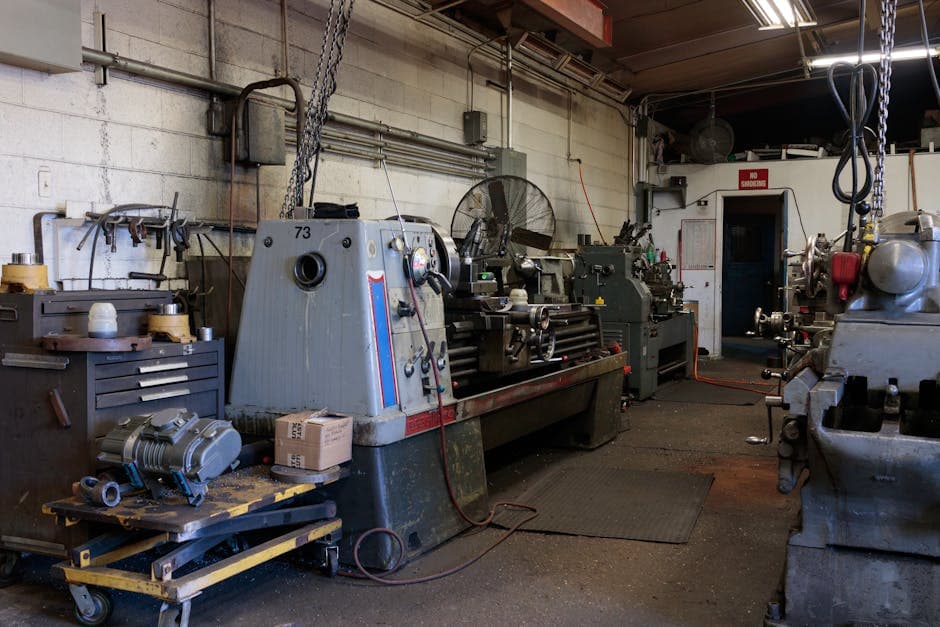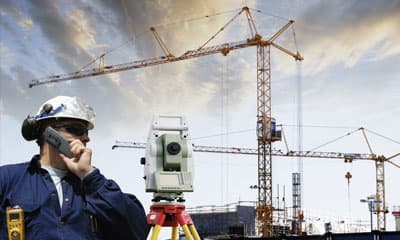
Advanced Water Treatment Technologies: Innovations for Industrial Applications
Water treatment technologies are evolving rapidly, presenting new opportunities for industrial facilities to improve efficiency, meet regulatory requirements, and advance sustainability goals. This article explores the latest innovations in industrial water treatment and how they're changing the landscape for manufacturing, processing, and utility operations.
The Changing Water Treatment Landscape
Industrial water management faces increasing challenges from stricter regulations, water scarcity concerns, and sustainability imperatives. Fortunately, technological advances are creating new solutions to these challenges, offering more effective treatment with lower costs and environmental impacts.
Smart Water Management Systems
The integration of digital technologies into water treatment represents one of the most significant advances in the field. Smart water management systems combine sensors, analytics, and automation to optimize treatment processes and resource utilization.
Key components include:
- IoT Sensors: Strategic placement of smart meters and sensors throughout water systems to collect real-time data on flow rates, pressure, temperature, chemical composition, and contaminant levels
- AI-Powered Analytics: Advanced algorithms that process sensor data to identify patterns, predict issues, and optimize treatment parameters
- Digital Twins: Virtual replicas of physical water treatment systems that enable simulation, testing, and optimization in a risk-free environment
- Automated Control Systems: Intelligent controls that adjust treatment processes based on real-time conditions and predictive insights
These technologies work together to deliver multiple benefits, including reduced chemical usage, lower energy consumption, decreased downtime, and improved water quality consistency. Our industrial clients implementing these systems have reported operational cost reductions of 15-20% while simultaneously improving treatment outcomes.
Advanced Membrane Technologies
Membrane filtration has long been a cornerstone of industrial water treatment, but recent innovations are dramatically enhancing its capabilities and efficiency:
Nanofiltration Advancements
Nanofiltration represents a middle ground between ultrafiltration and reverse osmosis, offering unique advantages for industrial applications. Recent innovations in nanofiltration include:
- Development of membranes with precise pore size control, allowing for selective removal of specific contaminants while retaining beneficial minerals
- Integration of antimicrobial properties to reduce biofouling and extend membrane life
- Advanced materials that increase flux rates (water throughput) while maintaining separation efficiency
- Reduced energy requirements compared to traditional reverse osmosis systems
These advancements make nanofiltration particularly valuable for applications requiring selective contaminant removal, such as hardness reduction, color removal, and pharmaceutical waste treatment.
Membrane Bioreactors (MBRs)
Membrane bioreactors combine biological treatment processes with membrane filtration, offering a compact and efficient solution for industrial wastewater treatment. The latest MBR innovations include:
- Energy-efficient designs that reduce the historically high power consumption of MBR systems
- Anti-fouling technologies that extend membrane life and reduce maintenance requirements
- Enhanced nutrient removal capabilities for facilities facing strict discharge limits
- Modular configurations that allow for scalable implementation and easy expansion
These systems are particularly valuable for industrial facilities with space constraints or those requiring high-quality effluent for reuse applications.
PFAS Removal Technologies
Per- and polyfluoroalkyl substances (PFAS) have emerged as contaminants of significant concern across industries. These "forever chemicals" are highly persistent in the environment and are increasingly subject to stringent regulations. Innovative technologies for addressing PFAS in industrial water include:
Destruction Technologies
Rather than merely separating PFAS from water, destruction technologies break down these persistent compounds into harmless components:
- Electrochemical Oxidation: Systems that use specialized anodes to generate free electrons that break carbon-fluorine bonds, converting PFAS into carbon dioxide, hydrofluoric acid, and fluorine ions
- UV-Triggered Processes: Technologies that use ultraviolet light to initiate reactions that dismantle PFAS molecules into simple, non-toxic compounds
- Supercritical Water Oxidation: High-temperature, high-pressure systems that create conditions where PFAS compounds break down rapidly
Advanced Separation Methods
For applications where destruction is not feasible, enhanced separation technologies offer effective PFAS removal:
- Specialized Adsorbents: Novel materials with high affinity for PFAS compounds, offering greater capacity and selectivity than traditional activated carbon
- High-Recovery Membrane Systems: Advanced reverse osmosis configurations that concentrate PFAS for separate treatment while maximizing water recovery
- Ion Exchange Resins: Selective resins designed specifically for PFAS capture, with improved regeneration capabilities
As regulatory scrutiny of PFAS intensifies, these technologies are becoming essential for industries ranging from electronics manufacturing to food processing.
Resource Recovery Systems
Water treatment is increasingly viewed not just as a compliance requirement but as an opportunity for resource recovery. Innovative systems are turning waste streams into valuable resources:
- Phosphorus Recovery: Advanced precipitation systems that extract phosphorus from wastewater in forms suitable for fertilizer production
- Metal Recovery: Electrochemical and adsorption technologies that selectively remove valuable metals from industrial wastewater for reuse or sale
- Energy Harvesting: Enhanced anaerobic digestion systems that maximize biogas production from organic waste, generating renewable energy
- Salt Recovery: Crystallization technologies that convert concentrated brine streams into usable salt products
These systems align environmental and economic objectives, transforming waste management costs into potential revenue streams while reducing environmental impact.
Modular and Decentralized Solutions
The trend toward modular, decentralized water treatment is revolutionizing how industrial facilities approach water management. These systems offer several advantages over traditional centralized treatment:
- Scalability: Easily expanded or reduced based on changing needs
- Flexibility: Quickly reconfigured to address different treatment requirements
- Resilience: Distributed systems provide redundancy and reduce vulnerability to single-point failures
- Point-of-Use Treatment: Water can be treated to the specific quality needed for each application, rather than treating all water to the highest standard
- Reduced Infrastructure: Less extensive piping and pumping requirements
The modular water and wastewater treatment system market is projected to reach USD 10.1 billion by 2030, growing at a CAGR of 8.7% from 2024. This growth reflects the compelling advantages these systems offer for industrial applications.
Implementation Considerations
When evaluating advanced water treatment technologies, industrial facilities should consider several factors to ensure successful implementation:
Technology Selection Criteria
- Compatibility: How well does the technology integrate with existing systems and processes?
- Scalability: Can the solution grow with changing production needs?
- Reliability: What is the technology's track record in similar applications?
- Maintenance Requirements: What specialized skills or resources are needed for upkeep?
- Total Cost of Ownership: Beyond initial investment, what are the ongoing operational costs?
- Sustainability Impact: How does the technology affect the facility's environmental footprint?
Pilot Testing
For most advanced technologies, pilot testing is essential before full-scale implementation. Effective piloting involves:
- Clear definition of success criteria and performance metrics
- Testing under various operating conditions to assess robustness
- Thorough data collection and analysis
- Evaluation of both technical performance and operational requirements
- Scaling considerations for full implementation
At HPATS, we offer pilot testing services for many of these advanced technologies, helping clients make informed decisions before committing to full-scale implementation.
Case Study: Food Processing Facility
To illustrate the potential of these technologies, consider a recent project we completed with a food processing client:
Challenge: The facility faced increasingly stringent discharge limits for organic compounds and nutrients, while simultaneously seeking to reduce water consumption due to regional scarcity concerns.
Solution: We implemented an integrated system featuring:
- An advanced membrane bioreactor for primary treatment
- Nanofiltration for selective removal of specific contaminants
- Smart monitoring and control systems to optimize performance
- Modular design allowing for staged implementation and future expansion
Results:
- Reduced freshwater consumption by 35% through water recycling
- Achieved 100% compliance with new, stricter discharge regulations
- Decreased treatment chemical usage by 22%
- Realized a return on investment in under 30 months
Conclusion
Advanced water treatment technologies are creating new possibilities for industrial water management, offering solutions that are more effective, efficient, and sustainable than traditional approaches. By embracing these innovations, industrial facilities can address regulatory challenges, reduce operational costs, and advance sustainability goals simultaneously.
At HPATS, we partner with leading technology providers to bring these advanced solutions to our industrial clients. Our team combines deep water treatment expertise with practical industrial experience to ensure successful implementation and reliable performance.
Contact us to discuss how these innovative technologies can be applied to your specific water treatment challenges.
About the Author
Jennifer Wallace
Expert in Water & Wastewater with years of industry experience. Regularly contributes insights and analysis on industrial trends and technologies.
You Might Also Like

Digital Transformation in Oil & Gas: Key Technologies for 2024
Explore how digital twins, AI, IoT, and robotics are revolutionizing the oil and gas industry in 2024, creating opportunities for enhanced efficiency, safety, and sustainability...

The Importance of Quality Valves in Oil and Gas Operations
In the oil and gas industry, the reliability and performance of equipment are paramount to ensuring operational efficiency, safety, and envi

Water Conservation Technologies for Industrial Applications
Water is a precious resource that is increasingly under pressure from growing demand, pollution, and climate change. For industrial faciliti
